Welcome to Daily Banking Digest, your premier source for the latest news and insights on May 11, 2024, focusing on banking, the economy, and finance. Our platform offers a comprehensive overview of the day’s most critical financial stories, market trends, and economic developments. Whether you’re a professional in the financial sector, an investor monitoring market movement, or someone interested in staying informed about the economic landscape, Daily Banking Digest provides reliable, up-to-date information.
Join our Telegram Channel for Daily PDF in your Inbox – Click Here
Table of Contents
Russian Crude Oil Discounts Narrow to $3-6/Barrel in FY24
Russian crude oil discounts have significantly decreased, threatening India’s savings on its oil import bill. India saved over ₹1 lakh crore in FY23 and FY24 due to Russian discounts, but these discounts have now halved to $3-6 per barrel. As a result, India’s net oil import bill is expected to widen in FY25.

Key Points:
Discounts on Russian Crude Oil: – Discounts have almost halved to $3-6 per barrel from $8-10 during April 2023-March 2024.
Savings from Russian Discounts: – India saved over ₹1 lakh crore in FY23 and FY24 due to Russian discounts.
Impact on India’s Oil Import Bill: – With discounts narrowing, India’s net oil import bill is expected to widen to $101-104 billion in FY25.
Russian Supplies to India: – Russian supplies have moderated compared to FY24. – BPCL expects Russian oil processing to be at least 25% in FY25.
Crude Oil Price Outlook: – BPCL expects crude oil prices to remain in the range of $83-87 per barrel in the near future.
India’s Rooftop Solar Subsidy Program: Scrutiny and Skepticism.
The Indian government has launched a new subsidy scheme to promote solar energy adoption, aiming to install solar panels in 10 million homes. The program provides financial incentives and simplifies the installation process, targeting a reduction in electricity bills and CO2 emissions. However, challenges remain, including resistance from electricity distribution companies (Discoms), lack of skilled workers, and the need for battery backup during power outages.

Key Points
Subsidy Scheme – ₹7500 crore ($9 billion) in subsidies for grid-connected rooftop solar systems in 10 million homes – Aims to create 30 gigawatts (GW) of solar capacity and reduce 720 million tonnes of CO2 emissions
Simplified Process – One-stop online portal for applications and installations – Subsidies deposited directly into bank accounts
Challenges – Resistance from Discoms, who may lose income – Shortage of skilled workers for installation and maintenance – Proliferation of substandard products – Grid-connected systems do not provide power backup during outages
Opportunities – Potential boom in the rooftop solar industry – Creation of 1.7 lakh direct jobs – Increased consumer interest in renewable energy
Expert Opinion – Friction with Discoms due to limited growth of home solar systems – Technical losses in the grid system may hinder the integration of excess electricity from rooftop systems
Conclusion The new solar subsidy scheme has the potential to accelerate India’s transition to renewable energy. However, addressing challenges such as distribution issues, skill development, and product quality is crucial for its success.
India-EU Economic and Technological Cooperation: A Promising Future
India and the European Union (EU) are strengthening their economic ties through the ongoing Free Trade Agreement (FTA) negotiations and partnership in the Trade and Technology Council (TTC). India values the India-Middle East-Europe Economic Corridor (IMEEC) and seeks to advance it. The EU recognizes India’s growing importance and aims to deepen the partnership.
Key Points:
India-EU Economic Relationship: – EU is India’s largest economic partner. – FTA negotiations hold promise for increased economic exchange.
Trade and Technology Council (TTC): – India and EU have partnered in the TTC. – TTC aims to enhance cooperation, trade, and investment.
India-Middle East-Europe Economic Corridor (IMEEC): – India attaches importance to the IMEEC. – India looks forward to advancing the initiative.
EU’s Interest in the Indo-Pacific: – EU and individual European states have shown increased interest in the Indo-Pacific. – India welcomes this approach.
Challenges and Opportunities: – India and EU face challenges in supply chains and digital cooperation. – Partnership can address these challenges and create opportunities.
Robust Manufacturing Sector Drives 5.8% Surge in Factory Output for FY24
India’s factory output growth surged to 5.8% in 2023-24, driven by a strong manufacturing sector. The Index of Industrial Production (IIP) for March 2024 grew 4.9%, led by a 5.2% increase in manufacturing output. However, the growth rate was lower than the 5.7% recorded in February 2024.
Key Points
Overall Growth – Factory output growth closed at 5.8% in 2023-24, higher than the 5.2% growth in 2022-23. – IIP growth for March 2024 was 4.9%, higher than the 1.9% growth in March 2023.
Sectoral Growth – Manufacturing sector output growth reached a five-month high of 5.2% in March 2024, lifting the overall growth for the fiscal year to 5.5%. – Mining sector growth remained sluggish at 1.2% in March 2024, while electricity generation grew 8.6%.
Use-Based Classification – Consumer non-durables and consumer durables showed strong growth in March 2024, at 4.9% and 9.5% respectively. – Construction goods, primary goods, and capital goods recorded growth declines in March 2024.
Expert Analysis – Madan Sabnavis: Consumer goods revival indicates increased consumption. – Aditi Nayar: IIP growth dip in March 2024 was expected due to the fading leap-year effect. – Dharmakirti Joshi: IIP slowdown in March 2024 reflects moderating government capital expenditure and a shift in consumer demand.
NPS All Citizen Model: Celebrating 15 Years of Excellence – Unveiling the Star Performers
The National Pension System (NPS) has become a significant retirement planning tool in India, with over 11 pension funds managing assets worth around ₹1.7 lakh crore. The equity option (Scheme E) has performed well, outperforming other asset classes over the past five and 10 years. However, it falls short of comparable mutual fund categories. Scheme G (government bonds) and Scheme C (corporate bonds) have consistently outperformed their benchmarks and equivalent mutual fund categories.
Key Points:
Active Investing (Scheme E):
- Outperformed other asset classes over five and 10 years.
- Falls short of comparable mutual fund categories.
- Offers flexibility in asset allocation and tax benefits.
- Six out of 10 funds surpassed the equity benchmark over one and three years.
Passive Investing (Scheme G and Scheme C):
- Scheme G (government bonds) consistently outperformed the benchmark and equivalent mutual fund categories.
- Scheme C (corporate bonds) also outperformed the benchmark and equivalent mutual fund categories.
- Scheme C carries a slightly higher risk profile than Scheme G but did not deliver higher returns.
SEBI Imposes Ban on SME Company for Misappropriation of IPO Funds
SEBI has banned Varanium Cloud and its managing director from the securities market for misusing funds raised through an IPO and rights issue. The company’s financial statements were misstated, leading to increased investor interest and share price gains. The managing director sold shares at inflated prices, making significant profits. The company’s stock price has since plummeted, and trading has been suspended. A non-bailable warrant has been issued against the managing director for defaulting on payments to creditors.

Key Points:
SEBI Ban: – SEBI has banned Varanium Cloud and its managing director from the securities market.
Misuse of Funds: – Funds raised through the IPO and rights issue were not used for the intended purpose.
Questionable Transactions: – Varanium’s financial statements contained questionable transactions, with most sales and purchases being mere ledger entries.
Misstated Financial Statements: – Misstated financial statements presented a rosy picture of the company’s financial health.
Increased Investor Interest: – The misstated financial statements led to increased investor interest in the stock.
Share Price Gains: – The company’s share price rose significantly, allowing the managing director to sell shares at inflated prices.
Stock Price Decline: – The stock price has since plummeted, and trading has been suspended.
Non-Bailable Warrant: – A non-bailable warrant has been issued against the managing director for defaulting on payments to creditors.
RBI Elevates R Lakshmi Kanth Rao to Executive Director
The Reserve Bank of India (RBI) has appointed R. Lakshmi Kanth Rao as Executive Director, effective May 10, 2024. Rao will oversee the Deposit Insurance and Credit Guarantee Corporation, Right to Information Act (FAA), and Department of Communication.
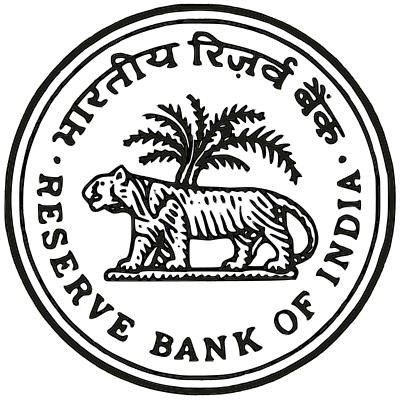
Key Points:
- Appointment: R. Lakshmi Kanth Rao appointed as Executive Director of RBI.
- Effective Date: May 10, 2024.
- Previous Role: Chief General Manager-in-Charge, Department of Regulation.
- Responsibilities: Deposit Insurance and Credit Guarantee Corporation, Right to Information Act (FAA), Department of Communication.
- Experience: Over three decades in RBI, including regulation of banks and NBFCs, supervision of banks, and consumer protection.
- Other Roles: Banking Ombudsman at RBI Chennai, Regional Director of Uttar Pradesh at Lucknow.
- Contributions: Member of various committees and working groups, contributing to policy formulation.
Zeta Introduces Digital Credit Platform for Indian Banks
Zeta, a banking tech unicorn, has introduced a digital credit-as-a-service product for banks. This offering leverages NPCI’s Credit Line on UPI scheme, which enables on-demand credit access through UPI payment apps. Zeta aims to capture a significant market share in this rapidly growing segment, which is projected to exceed $1 trillion in transaction volume by 2030.
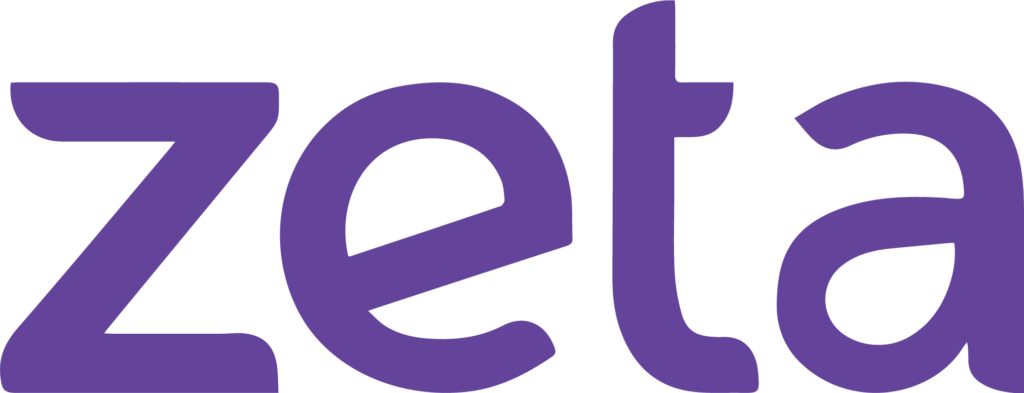
Key Points:
Product Launch: – Zeta has launched a digital credit-as-a-service product for banks.
Scheme Utilization: – The product is based on NPCI’s Credit Line on UPI scheme, which uses the UPI network for credit issuance.
Market Opportunity: – Zeta estimates the transaction volume on this scheme to exceed $1 trillion by 2030.
Product Features: – Credit products leverage Credit Line on UPI, offering on-demand access through any PSP payment app. – Consumers can borrow precisely what they need, when they need it.
Executive Quote: – Ramki Gaddipati, CEO APAC & Global CTO, Zeta, highlights the transformative potential of the product for credit inclusion in India.
Company Background: – Zeta was founded in 2015 and enables financial institutions to launch banking products. – Its platform supports various capabilities, including processing, issuing, lending, and digital banking.
Funding: – Zeta raised $250 million in funding in 2021, led by SoftBank. – Its total funding raised stands at $340 million.
TVS Credit Services Reports Net Profit of ₹572 Crore in FY24
TVS Credit Services Ltd., a subsidiary of TVS Motor Company Ltd., reported a 47% increase in profit after tax to ₹572 crore for the fiscal year ending March 31, 2024. The company’s total income grew by 40% to ₹5,795 crore, while its assets under management (AUM) increased by 26% to ₹25,900 crore.

Key Points:
- Profit After Tax: 47% increase to ₹572 crore for FY24
- Total Income: 40% growth to ₹5,795 crore for FY24
- Quarter Ended March 31, 2024:
- 33% rise in PAT to ₹148 crore
- 23% growth in Total Income to ₹1,519 crore
- Portfolio Expansion: Used vehicles, gold loans, and others
- Assets Under Management (AUM): 26% increase to ₹25,900 crore in FY24
- Customer Base: Over 43 lakh new customers added, surpassing 1.4 crore total customers
Union Bank of India Reports 19% Surge in Q4 Profit to ₹3,310.55 Crore
Union Bank of India (UBoI) reported a 19% increase in its fourth-quarter standalone net profit to ₹3,310.55 crore, driven by growth in net interest income and a significant decline in loan loss provisions. The bank’s board has recommended a dividend of ₹3.60 per share for FY24.

Key Points:
Net Profit: – Increased by 19% to ₹3,310.55 crore in Q4FY24.
Net Interest Income (NII): – Rose by 14% to ₹9,437 crore.
Non-Interest Income: – Declined by 11% to ₹4,707 crore.
Loan-Loss Provisions: – Reduced by 58% to ₹1,485 crore.
Asset Quality: – Gross NPAs declined to 4.76% of gross advances. – Net NPAs decreased to 1.03% of net advances.
Advances and Deposits: – Gross advances increased by 14.29% to ₹8,70,776 crore. – Total deposits rose by 9.28% to ₹12,21,528 crore.
Dividend: – Board recommended a dividend of ₹3.60 per share for FY24.
L&T Plans Strategic Acquisitions to Expand Semiconductor Business
Larsen & Toubro (L&T) plans to acquire companies with existing chip design client bases to expand its recently launched semiconductor business. The company aims to generate business through these acquisitions rather than acquiring technology. L&T is assembling a team for the new business and expanding its international presence to cater to global markets. The company will apply for government subsidies if they are extended to chip design.

Key Points:
Acquisition Strategy: – L&T will acquire companies with existing chip design client bases. – Acquisitions will focus on generating business rather than acquiring technology.
Business Focus: – L&T will focus on chip design, remaining technology agnostic. – Target industries include energy, communication, automobile, and industrial applications.
International Expansion: – L&T is aggressively setting up teams in the USA, Europe, and Japan. – These markets are expected to be major customers for L&T’s semiconductor business.
Government Subsidy: – L&T will apply for government subsidies if they are extended to chip design. – Subsidies could enhance product competitiveness and accelerate growth.
Semiconductor Ecosystem: – The semiconductor ecosystem consists of designing, manufacturing, and testing. – India’s semiconductor industry is gaining momentum with significant investments from various companies.
RBI’s Dividend Transfer to Centre Projected to Reach ₹1 Lakh Crore in FY25
The Reserve Bank of India (RBI) is projected to transfer approximately ₹1,00,000 crore to the government in FY25, slightly higher than the ₹87,400 crore transferred in FY24. This projection is based on a report by Union Bank of India, which anticipates a robust dividend payout from the RBI. The government has budgeted ₹1,02,000 crore in dividend income from the RBI and other financial institutions for FY25.

Key Points:
- RBI Dividend Transfer: The RBI is expected to transfer ₹1,00,000 crore to the government in FY25.
- Robust Dividend Payout: The RBI is projected to maintain a strong dividend payout for FY25.
- Government Budget: The government has budgeted ₹1,02,000 crore in dividend income from the RBI and other financial institutions for FY25.
- Positive Surprise: The report suggests that a positive surprise in dividend income is likely, similar to the previous fiscal year.
Bank of India’s Q4 Profit Surges 7% to ₹1,439 Crore Driven by Net Interest Income Growth
Bank of India (BoI) reported a 7% increase in its fourth-quarter standalone net profit to ₹1,439 crore, driven by growth in net interest income and a decline in provisions. The bank also recommended a dividend of ₹2.80 per share and approved capital raising of up to ₹5,000 crore.
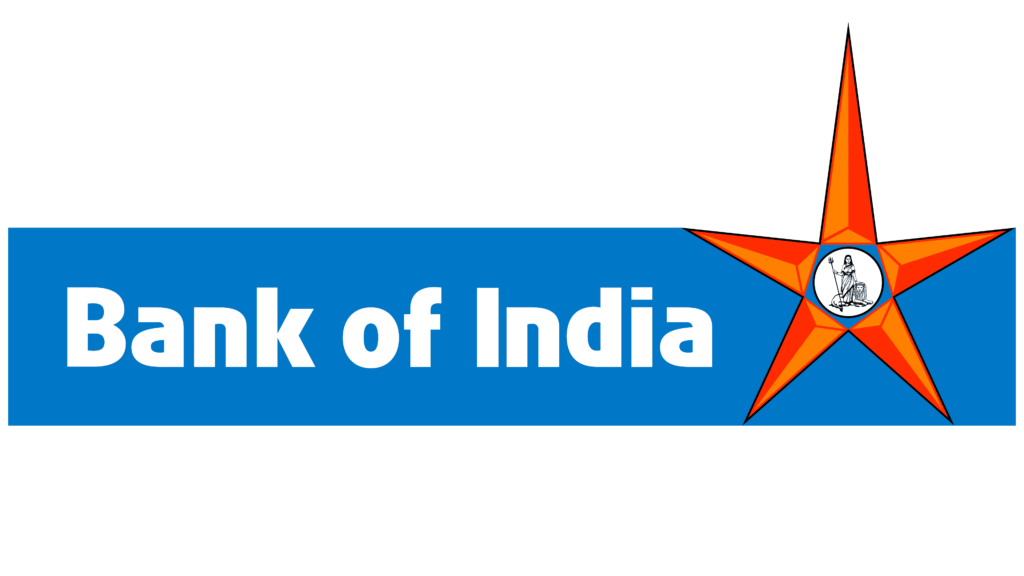
Key Points:
Financial Performance:
- Net profit increased by 7% to ₹1,439 crore.
- Net interest income (NII) grew by 7% to ₹5,937 crore.
- Total non-interest income declined by 43% to ₹1,751 crore.
- Net interest margin declined to 2.92%.
- Loan loss provisions increased by 274% to ₹2,043 crore.
- Tax burden decreased by 63% to ₹292 crore.
Asset Quality:
- Gross non-performing assets (NPAs) declined to 4.98%.
- Net NPAs decreased to 1.22%.
Growth Targets:
- Advances expected to grow by 13-14% in FY25.
- Deposits expected to grow by 12-13% in FY25.
Capital Raising:
- Board approved capital raising of up to ₹5,000 crore through Basel III compliant bonds.
Other:
- Loan sanctions pipeline of about ₹50,000 crore.
- Sanctions pipeline of ₹4-lakh crore, with 75% from private sector entities.
- Surplus holding of statutory liquidity ratio securities at ₹3.5-lakh crore.
Government Seeks Industry Input on Self-Reliance Initiatives
India is seeking industry input to identify products for which it seeks self-reliance and tariff concessions in its proposed free trade agreement (FTA) with the Eurasian Economic Union (EAEU). The government aims to protect domestic industries from potential competition from EAEU members, particularly in sectors such as engineering goods, electronics, and agriculture.
Key Points:
1. India’s Concerns: – India’s exports to the EAEU are significantly lower than imports, raising concerns about trade imbalances. – The EAEU’s FTAs with other countries could impact India’s competitive position.
2. Industry Input: – The government has requested industry to identify products where they face restrictions in EAEU markets. – Industry has expressed concerns about giving market access in certain sectors, such as dairy and agriculture.
3. Trade Potential: – India’s export potential to the EAEU is estimated at $14-24 billion. – Top Indian exports to the EAEU include medicines, telephones, and auto components.
4. Tariff and Non-Tariff Barriers: – The government has asked industry to provide details on tariff and non-tariff barriers faced in the EAEU. – India aims to negotiate rules of origin to prevent circumvention of cheap Chinese imports.
5. India’s Trade Strategy: – India has already signed an FTA with the European Free Trade Association. – The EAEU is a potential market for Indian exports, but India seeks to protect domestic industries in key sectors.
Most Manufacturers to Commence Production Under Revamped PLI Scheme
The majority of manufacturers approved under the revised Production-Linked Incentive (PLI) scheme for IT hardware are expected to commence production this year. The government is satisfied with the progress of the scheme and is awaiting companies to audit their production before disbursing incentives. Domestic companies will be given preference in the government’s India AI Mission, which aims to promote the development of artificial intelligence in India.
Key Points:
Production Commencement: – 17 out of 27 PLI companies will start production this year. – 6-7 companies started production last year, and two plan to start next year.
Government Satisfaction: – The government is satisfied with the progress of the IT hardware PLI scheme. – The process of production commencement has already begun.
Incentive Disbursement: – The government is awaiting companies to audit their production before giving out incentives.
India AI Mission: – Domestic companies will get preference in the government’s India AI Mission. – The mission focuses on providing access to GPU resources.
Domestic Value Addition: – The government aims to increase domestic value addition in the IT hardware sector. – This is addressed in the IT Hardware PLI scheme.
LIC’s April Premium Income Surges to a Decade-High of Rs 12,384 Crore
Life Insurance Corporation of India (LIC) reported its highest premium collection in April since 2014, with a total of Rs 12,384 crore. This represents a significant increase of 113.14% compared to the same month last year. LIC attributes this success to its innovative marketing strategies and strong reputation for reliability and customer-centric services.
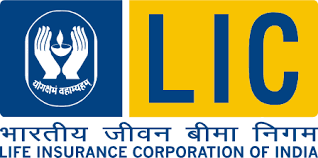
Key Points:
- Total Premium Collection: Rs 12,384 crore in April 2024, 113.14% higher than April 2023.
- Individual Premium Category: Rs 3,175.47 crore, a 25.17% increase from April 2023.
- Group Premium Category: Rs 9,141.34 crore, an 182.16% increase from April 2023.
- Group Yearly Premium Category: Rs 66.83 crore, a 100.33% increase from April 2023.
- Factors Contributing to Success: Innovative marketing strategies, strong reputation, and customer-centric services.
Insurance Regulator Mandates Social Responsibility for Insurance Companies
The Insurance Regulatory and Development Authority of India (Irdai) has issued a master circular mandating life and non-life insurance companies to allocate a portion of their business towards rural, social sector, and motor third-party obligations. This move aims to enhance insurance coverage and meet the goal of “insurance for all” by 2047.

Key Points:
Rural Sector Obligation:
- Life insurers must ensure a minimum percentage of lives covered in identified gram panchayats.
- The Life Insurance Council will identify gram panchayats in consultation with the Ministry of Panchayati Raj.
- Insurers will be allocated gram panchayats based on market share or other agreed parameters.
Social Sector Obligation:
- The details of social sector obligations are not specified in the article.
Motor Third-Party Obligation:
- The details of motor third-party obligations are not specified in the article.
Implementation:
- The Life Insurance Council will share the list of allocated gram panchayats with Irdai.
- General insurers and health insurance players will also be allocated gram panchayats in consultation with the General Insurance Council.
- There are currently 40 general insurance companies and 5 standalone health insurance companies in India.
Capital Small Finance Bank Aims to Accelerate Loan Growth and Expand Branch Network
Capital Small Finance Bank aims to double its advances growth to 22-24% in FY25, supported by geographic expansion in Haryana, Rajasthan, and Jammu. The bank plans to add 24-26 branches to its current network of 177. The bank’s diversified portfolio includes 99.9% secured advances, with agriculture loans accounting for 37%, mortgage loans for 26%, and MSME loans for 19%.
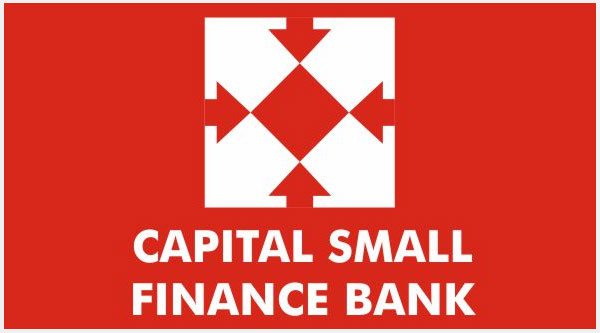
Key Points:
Advances Growth Target: – Aiming for 22-24% advances growth in FY25, double the pace achieved in FY24.
Geographic Expansion: – Plans to add 24-26 branches, focusing on Haryana and Rajasthan. – Foray into Jammu with a couple of branches.
Growth Capital: – Raised Rs 523 crore through an IPO in February. – Poised for faster growth after raising growth capital.
Portfolio Diversification: – 99.9% secured advances. – Agriculture loans: 37% – Mortgage loans: 26% – MSME loans: 19%
Financial Performance: – Net profit of Rs 112 crore in FY24, up 19% year-on-year. – Gross NPA ratio: 2.76% – Net NPA ratio: 1.40%
NPA Management: – Recovery-based NPA management. – No bad loan sales or write-offs since inception.
RBI Scrutinizes Asset Reconstruction Companies Amidst Allegations of Misconduct
The Reserve Bank of India (RBI) will meet with asset reconstruction companies (ARCs) to discuss corporate governance and stressed-asset resolutions. Concerns have been raised about potential back-door entry by defaulting promoters through ARCs. The meeting aims to address these concerns and improve the resolution process for stressed assets.

Key Points:
1. RBI-ARC Meeting: – RBI to meet with top management of all 27 registered ARCs on May 17th. – RBI officials and executive directors will participate.
2. Concerns about Back-Door Entry: – Allegations that ARCs strike deals with defaulting promoters, giving them back-door entry at a discount. – Defaulting promoters are prohibited from giving resolution plans under IBC Section 29A.
3. ARC Modus Operandi: – ARCs acquire majority debt of defaulting companies at a discount. – As largest debtholders, ARCs control resolution process under NCLT. – Resolution requires consent of 66% of debtholders, giving ARCs significant influence.
4. Asset Sales under Sarfaesi: – ARCs sometimes sell assets of defaulting borrowers to entities linked to promoters under Sarfaesi Act. – Allegations that ARCs sell assets to entities with whom promoters have deals.
5. Tax Evasion Allegations: – Search and seizure operations conducted on four ARCs in 2021 for alleged tax evasion.
6. Uniform Treatment Request: – ARCs will seek uniform treatment on stressed-asset resolution between banks and ARCs. – RBI has restrictions on ARCs settling with wilful defaulters, while banks do not.
7. Corporate Governance Improvement: – RBI will discuss ways to improve corporate governance in ARCs. – RBI conducted onsite supervision of ARCs last year.
8. ARC Industry Overview: – ARCs have acquired nearly 10 lakh crore of bad loans since 2003. – ARCs have issued2.85 lakh crore of SRs, with `1.5 lakh crore redeemed. – NARCL has emerged as an active player in the ARC industry.
ICICI Bank’s Cards and Payments Head, Bijith Bhaskar, Steps Down
Bijith Bhaskar, the head of Cards, Payment Solutions, E-Commerce Ecosystem, Merchant Ecosystem, and Consumer Finance at ICICI Bank, has resigned from his position effective May 18, 2024. The resignation is due to personal reasons and Bhaskar will no longer be part of the bank’s senior management personnel.

Key Points:
- Resignation: Bijith Bhaskar has resigned from his position at ICICI Bank.
- Effective Date: The resignation will be effective from May 18, 2024.
- Reason: The resignation is due to personal reasons.
- Tenure: Bhaskar has been with ICICI Bank for 21 years.
- Roles: Bhaskar has held various product functions and handled businesses such as retail liabilities, retails assets, and SME across geographies.
- Education: Bhaskar holds a BTech degree in Mechanical Engineering and a PGDIM from IIM Mumbai (NITIE).
Canara Bank Revamps Corporate Loans to Enhance Profitability
Canara Bank is capitalizing on strong credit demand to improve its net interest margin (NIM) by reducing exposure to low-yielding corporate loans. Despite guiding for a lower NIM in FY25, the bank remains confident in maintaining a NIM of around 3% through conservative estimates and effective management of bulk deposits and liquidity.

Key Points:
NIM Guidance: – NIM improved to 3.05% in Q3 FY24, but the bank guides for a lower NIM of 2.9% in FY25 due to conservative estimates and ongoing corporate loan portfolio rejig.
Bulk Deposits: – The bank managed high interest rates on bulk deposits by not quoting beyond 7.9% and utilizing excess SLR for RBI window funds. – Cost of bulk deposits has declined to 7.55-7.6%, while retail term deposits remain stable.
Liquidity: – Liquidity conditions are expected to remain similar in the first half of FY25 and may improve further in the second half.
Deposit Growth: – The bank guides for 9% deposit growth in FY25, lower than FY24’s 11.29% growth. – This conservative estimate is due to the ongoing corporate loan portfolio rejig and the need to maintain a comfortable credit-to-deposit ratio.
Corporate Portfolio Rejig: – The bank is not targeting specific industries for loan reduction. – Loans booked at low rates during surplus liquidity are being replaced with higher-yielding advances to improve NIM.
India’s Forex Reserves Surge by $3.66 Billion, Reaching $641.59 Billion
India’s foreign exchange reserves witnessed a rise of $3.668 billion to $641.59 billion for the week ending May 3, reversing a three-week decline. The increase was primarily driven by a surge in foreign currency assets, while gold reserves declined.
Key Points:
Foreign Currency Assets:
- Increased by $4.459 billion to $564.161 billion.
- Include the impact of currency fluctuations on non-US units held in reserves.
Gold Reserves:
- Decreased by $653 million to $54.88 billion.
Special Drawing Rights (SDRs):
- Increased by $2 million to $18.051 billion.
Reserve Position with IMF:
- Decreased by $140 million to $4.499 billion.
Overall Forex Reserves:
- Increased by $3.668 billion to $641.59 billion.
- Hit an all-time high of $648.562 billion on April 5.
March IIP Growth Dips Slightly to 4.9%, FY24 Growth at 5.8%
India’s industrial production growth slowed to 4.9% in March 2024, primarily due to a decline in mining output. However, the manufacturing sector and power generation witnessed growth, contributing to an overall IIP growth of 5.8% for the fiscal year 2023-24.
Key Points:
- Industrial Production Growth: 4.9% in March 2024, down from 5.6% in February 2024.
- Mining Output Growth: Decelerated to 1.2% in March 2024 from 6.8% in March 2023.
- Manufacturing Sector Growth: Accelerated to 5.2% in March 2024 from 1.5% in March 2023.
- Power Generation Growth: Increased by 8.6% in March 2024, reversing a 1.6% contraction in March 2023.
- Capital Goods Growth: Declined to 6.1% in March 2024 from 10% in March 2023.
- Consumer Durables Growth: Expanded by 9.5% in March 2024, recovering from an 8% contraction in March 2023.
- Consumer Non-Durables Growth: Grew by 4.9% in March 2024, improving from a 1.9% contraction in March 2023.
- Infrastructure/Construction Goods Growth: Reported a 6.9% growth in March 2024, slightly lower than the 7.2% expansion in March 2023.
- Primary Goods Growth: Logged a 2.5% growth in March 2024, down from 3.3% in March 2023.
- Intermediate Goods Growth: Expanded by 5.1% in March 2024, higher than the 1.8% growth in March 2023.
FIU-India to Imminently Rescind Ban on Binance, the World’s Leading Cryptocurrency Exchange
The Financial Intelligence Unit-India (FIU-India) is lifting the ban on Binance, the world’s largest crypto exchange, after completing due diligence. Binance and another offshore exchange, KuCoin, have registered with FIU-India, giving the agency visibility into their transactions. The move comes as part of a global effort to regulate crypto assets, with the International Monetary Fund (IMF) and Financial Stability Board (FSB) providing guidelines and a roadmap for countries.
Key Points:
Crackdown on Crypto:
- FIU-India issued show cause notices to nine offshore crypto exchanges for illegal operations on December 28, 2023.
KuCoin Registration and Penalty:
- KuCoin registered with FIU-IND in March after being imposed a penalty of Rs 34.5 lakh.
Binance Registration and Proceedings:
- Binance has also registered with FIU-India, but proceedings are still ongoing to determine a penalty.
Increase in Registered Crypto Entities:
- With KuCoin and Binance’s registration, the total number of registered crypto entities in India increases to 48.
Global Regulatory Framework:
- The IMF and FSB have published guidelines and a roadmap for crypto regulations, focusing on investor protection, cybersecurity, and anti-money laundering measures.
G20 Road Map on Crypto Assets:
- G20 finance ministers and central bank governors adopted the IMF-FSB road map on crypto assets, calling for its swift implementation.
RBI’s Stance on Crypto:
- Reserve Bank of India Governor Shaktikanta Das maintains the central bank’s stance on banning crypto assets, despite the global trend towards regulation.
SEBI Proposes Streamlined Securities Transfer to Client Accounts
The Securities and Exchange Board of India (Sebi) is considering making the direct payout of securities to clients’ demat accounts mandatory, reducing the risk to clients’ securities. Additionally, Sebi proposes reducing the trading lot size of Infrastructure Investment Trusts (Invits) to increase liquidity and allow broader investor participation.

Key Points:
Direct Payout of Securities:
- Sebi plans to make direct payout of securities to clients’ demat accounts mandatory.
- Currently, the process is voluntary, with clearing corporations crediting securities to brokers’ pool accounts, who then credit clients’ accounts.
- The move aims to enhance operational efficiency and reduce risk to clients’ securities.
Reduction of Invits Trading Lot Size:
- Sebi proposes reducing the trading lot size of Invits to Rs 25 lakh from Rs 1 crore.
- The aim is to increase liquidity and allow a broader base of investors to participate.
- The move will promote portfolio diversification and better risk management for investors.
Changes in Invits Sponsorship Norms:
- Sebi proposes clarifying the possible changes in sponsorship, including the exit of a co-sponsor without necessarily inducting a new sponsor.
- The revision aims to provide clarity on sponsorship changes.
SEBI Requires Investment Advisors to Disclose Social Media Information Semi-Annually
The Securities and Exchange Board of India (Sebi) has implemented new guidelines requiring investment advisors to disclose their social media presence and provide detailed information about their operations. This move aims to enhance transparency, protect investors from misleading financial advice, and crack down on unregistered influencers providing stock tips.

Key Points:
1. Disclosure of Social Media Presence:
- Investment advisors must disclose details of their social media accounts, pages, channels, and other platforms twice a year.
2. Detailed Information Required:
- Advisors must provide information about bank accounts for advisory fees, office addresses, shareholding patterns, and advertisements.
3. Reporting Frequency:
- Half-yearly reports are to be submitted on September 30 and March 31 of each financial year.
4. Rationale for Guidelines:
- Rise in unregistered influencers and misuse of social media by registered advisors for unauthorized or misleading investment advice.
5. Cases of Misconduct:
- Sebi has barred influencers like P R Sundar, Syyed Shujauddin, and Mohammad Nasiruddin Ansari for providing financial advice without registration.
6. Financial Harm Caused:
- Mohammad Nasiruddin Ansari collected Rs 17.2 crore in fees from investors, highlighting the potential financial harm caused by such practices.
7. Reasons for New Rule:
- Crack down on unregistered entities providing stock tips.
- Monitor registered advisors for unsolicited and misleading advice.
- Prevent false promises, technical jargon, and misleading testimonials.
- Track financial activities and identify malpractices.
- Enhance supervision and prompt action against violators.
SEBI Proposes Reduction in Trading Size of Privately Placed InvITs to Rs. 25 Lakhs
The Securities and Exchange Board of India (Sebi) has proposed significant changes to boost investor participation and liquidity in privately placed infrastructure investment trusts (InvITs). The key proposals include reducing the trading lot size, easing compliance burdens, and enhancing unitholder engagement.

Key Points:
1. Reduction of Trading Lot Size: – Sebi proposes to reduce the trading lot size for privately placed InvITs from Rs 1 crore/Rs 2 crore to Rs 25 lakh.
2. Increased Liquidity and Investor Participation: – The reduced trading lot size aims to increase liquidity and allow a broader base of investors to participate in the InvIT market.
3. Compliance Burden Reduction: – Sebi proposes measures to reduce compliance burdens for InvITs and REITs, such as: – Fixing the time for distributions to unitholders within five working days of declaration. – Providing flexibility to managers to fix record dates. – Allowing unitholders’ meetings with less than 21 days’ notice.
4. Enhanced Unitholder Engagement: – Sebi proposes to: – Provide options for unitholders to attend meetings virtually. – Offer remote e-voting for all unitholder meetings.











